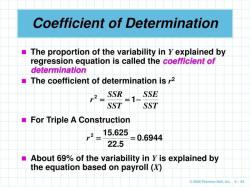What is the formula of Systematic sampling?
Systematic sampling is a method of selecting a sample from a larger population in a systematic and structured way. It involves selecting every "kth" element from a list or sequence, where "k" represents a fixed interval. The formula for systematic sampling is as follows:
Systematic Sampling Formula:
Where:
- "k" is the sampling interval (the number of items between each selected element).
- "N" is the total number of elements in the population.
- "n" is the desired sample size (the number of elements you want in your sample).
To perform systematic sampling, you would start by randomly selecting one element from the first "k" elements in your list (where "k" is calculated using the formula). From that point, you would select every "kth" element thereafter until you have the desired sample size.
Here's a step-by-step example of how to use the formula for systematic sampling:
Example:Suppose you have a population of 1000 items, and you want to select a systematic sample of 100 items from this population.
Calculate the sampling interval "k" using the formula:
Randomly select a number between 1 and "k" as your starting point. Let's say you choose 7 as your starting point.
Begin your systematic sampling by selecting every "kth" element from your population. In this case, you would select the 7th item, then the 17th item, the 27th item, and so on, until you have selected 100 items.
Systematic sampling is a useful technique when you want to maintain a level of randomness in your sample while ensuring a structured and systematic approach. It can be especially helpful when dealing with large populations where random sampling of every element is impractical.













